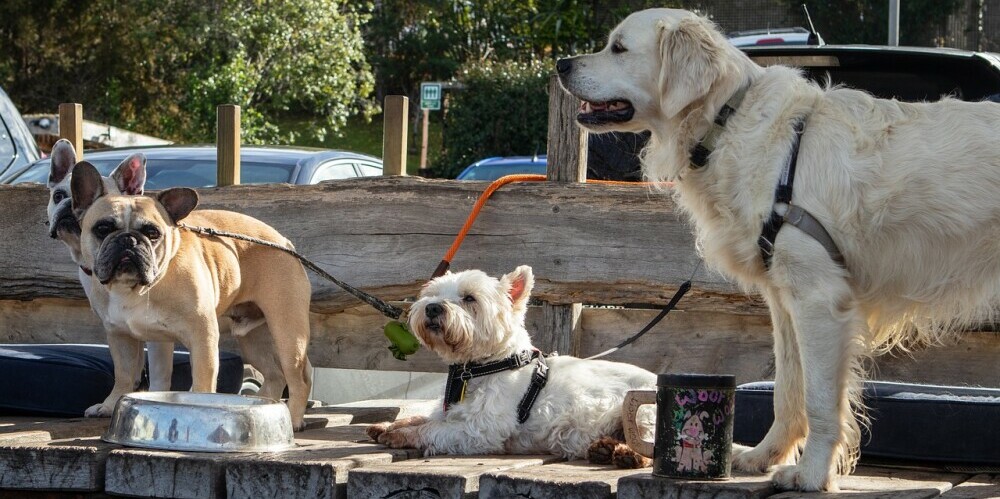Choosing the right size crate for your dog is a crucial aspect of responsible pet ownership. A crate serves multiple purposes, such as providing a safe space for your furry friend, aiding in house training, and ensuring their well-being during travel. However, selecting the appropriate crate size requires careful consideration of your dog’s breed, size, and individual needs. In this comprehensive guide, we will explore the factors that influence crate sizing, the types of crates available, and how to make the right choice to ensure your dog’s comfort and safety.
Factors to Consider:
1. Breed and Size:
The first step in choosing the right crate size is to consider your dog’s breed and size. Different breeds have varying space requirements, and it’s essential to select a crate that allows your dog to stand, turn around, and lie down comfortably. For instance, a small crate that suits a Chihuahua may not be suitable for a Labrador Retriever. Consult breed-specific guidelines or your veterinarian for recommendations on the ideal crate size for your dog.

2. Growth Potential:
Puppies grow rapidly, so it’s crucial to anticipate their adult size when selecting a crate. Opt for a crate that comes with dividers, allowing you to adjust the space as your puppy grows. This ensures that the crate remains appropriately sized during different stages of your dog’s life, saving you the need for frequent replacements.
3. Behaviour and Personality:
Consider your dog’s behaviour and personality traits when choosing a crate size. Some dogs prefer cozy, enclosed spaces, while others may feel more comfortable in open and spacious crates. If your dog is anxious or easily stressed, a smaller crate may provide a sense of security. On the other hand, more active dogs may benefit from larger crates that allow them to move around.
Types of Dog Crates:
1. Wire Crates:
Wire crates are popular due to their durability, ventilation, and visibility. These crates often feature removable dividers, making them suitable for growing puppies. Ensure that the wire spacing is appropriate for your dog’s size to prevent any escape attempts or injuries.

2. Plastic Crates:
Plastic crates are commonly used for travel and can offer a den-like environment for your dog. They provide a more enclosed space, which can be comforting for dogs that prefer a cozy setting. However, it’s crucial to choose a plastic crate with sufficient ventilation to prevent overheating.
3. Soft-Sided Crates:
Soft-sided crates are lightweight and convenient for travel. While they may be suitable for well-behaved and calm dogs, they are not recommended for puppies or dogs with a tendency to chew or scratch. Soft-sided crates are available in various sizes, so choose one that accommodates your dog’s dimensions.
4. Heavy-Duty Crates:
For strong and determined dogs, heavy-duty crates made of materials like metal or reinforced plastic are essential. These crates are designed to withstand the efforts of escape artists and are often used for dogs with separation anxiety or destructive behaviours.
Choosing the Right Size:
1. Measurements:
Accurate measurements of your dog are vital when selecting a crate size. Measure your dog’s height from the floor to the top of their head, length from the tip of the nose to the base of the tail, and width at the widest point. Use these measurements as a reference when comparing crate sizes.
2. Standing and Turning Room:
A properly sized crate should allow your dog to stand on all fours without their head touching the top. Additionally, they should be able to turn around comfortably. Ensuring sufficient standing and turning room promotes a positive association with the crate and prevents discomfort.
3. Lying Down:
When your dog lies down, the crate should be long enough to accommodate their entire body. Measure your dog in a lying position and add a few inches for comfort. This ensures that your dog can stretch out and relax without feeling cramped.
4. Dividers for Puppies:
If you have a puppy, choose a crate with a divider to adjust the space as they grow. The crate should be sized to fit the puppy’s current dimensions, with the divider preventing them from having excess space that could lead to accidents.
Conclusion:
Selecting the right size crate for your dog is a thoughtful process that involves considering various factors, including breed, size, behaviour, and crate type. By investing time and effort in choosing an appropriately sized crate, you provide your dog with a comfortable and secure space that serves their needs. Whether for house training, travel, or creating a safe haven at home, the right crate enhances your dog’s well-being and contributes to a harmonious relationship between you and your beloved pet. Remember that consulting with your veterinarian and observing your dog’s preferences will guide you toward making the best decision for their specific requirements.